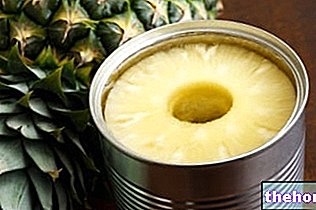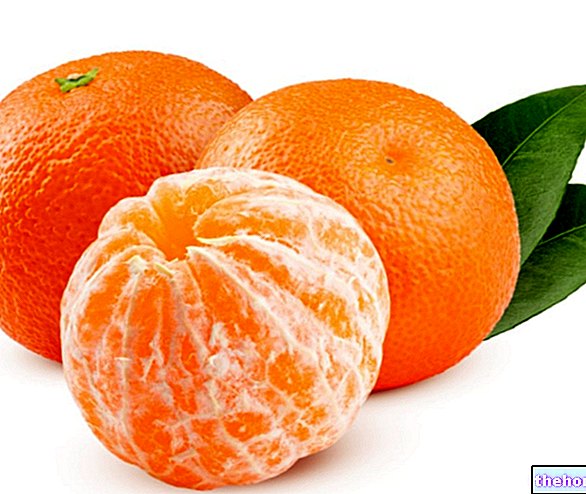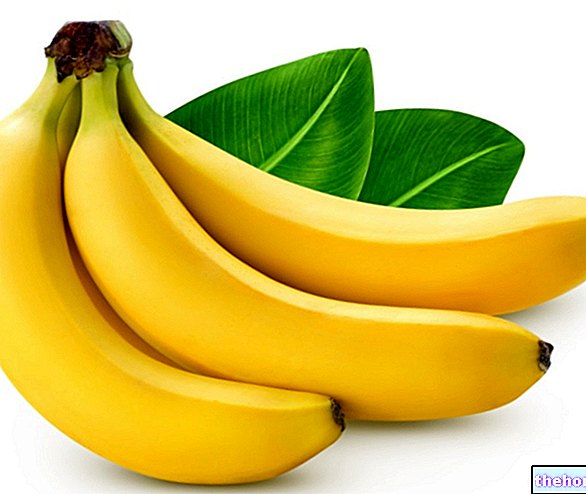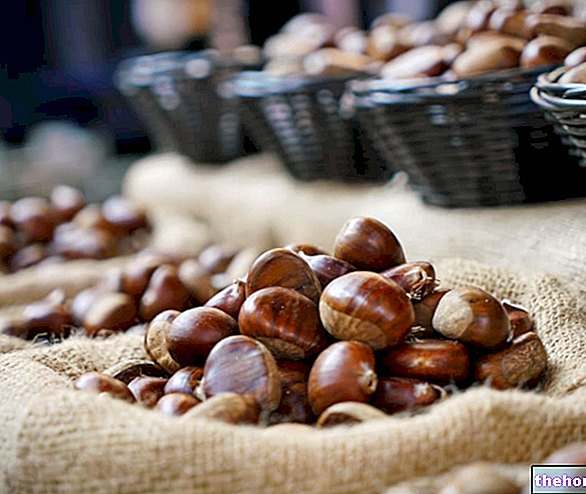Watch the video
- Watch the video on youtube
Generalities and Characteristics
Caco mela, kaki apple or cacomela are the nouns with which, in common language, some varieties referring to the botanical species are identified Diospyros kaki. The commercial interest is aimed specifically at varieties Hana Fuyu, O’Gosho, Fuyu and Jiro.
Compared to "normal" persimmons, for the reasons we will see later, apple persimmons do not have a high concentration of tannins; for this, they can also be eaten immature (hard consistency).

Known in English as Japanese persimmon, kaki persimmon or asian persimmon, persimmon is the most cultivated species of the genus Diospyros. Production initially extended throughout Eastern Asia and, only in the 19th century, in California, Southern Europe and Brazil (with the increase in cultivars).
Native to China, persimmon is a deciduous tree, with broad and rather thick leaves .; produces a sweet, slightly acidulous fruit, green with a hard consistency in the early phase, and orange with a soft consistency in the late phase; the concentration of tannins varies according to the variety.
Persimmon apple is characterized by a very low concentration of tannins (proanthocyanidins) which, on the other hand, being very high in "normal" persimmon, would make the unripe fruit astringent and bitter (considered inedible).
In astringent varieties (such as Hachiya), the levels of tannins are reduced in proportion to the ripeness and softness of the fruit. It goes without saying that, to facilitate harvesting, the astringent varieties should be taken in a state of poor ripeness (hard consistency) and left to ripen at rest (process called amalgamation).
Thanks to the absence of astringent characteristics, especially with the manifestation of very hot autumn months (which increase the sugar content), the persimmon apple (being naturally almost devoid of tannins) can be harvested and eaten even in the early ripening phase (such as it was a pommel); the fact remains that, according to tastes, it can still be subjected to ammezzimento (to use it as soft persimmon).
On the other hand, if the season does not present very high temperatures, the persimmon apple taken with poor ripeness (although still poor in tannins) does not have a high sugar level and, to the taste, it is rather tasteless.
The persimmon apple is eaten fresh, in jam, in the form of sweet vanilla sauce in desserts and as an ice cream flavor; in some parts of the world, it is cut and dried to produce dehydrated fruit flakes.
Baked Caco Apple
Problems with playing the video? Reload the video from youtube.
- Go to the Video Page
- Go to the Video Recipes Section
- Watch the video on youtube
Nutritional Properties
Persimmon apple is a food of plant origin that belongs to the VI fundamental group of foods.
We remind you that, in principle, like almost all late fruits, even the persimmon apple is a very energetic food; on the other hand, compared to the astringent varieties or to the halved apple persimmon itself, the one with a hard consistency should have a lower caloric density (because it is almost immature).

Nutritional values (per 100 g of edible portion)
The energy of the apple persimmon increases parallel to the sugar content, which is imparted by: level of ripeness, rainfall and temperature during fruiting. However, in order not to risk committing a caloric underestimation error, below we will report the generic nutritional values of the persimmon.
As anticipated, the energy brought by the apple persimmon is provided above all by simple sugars, having an importance of about 16% of the total weight and consisting mainly of fructose. Proteins (with a low biological value) and lipids (theoretically with an unsaturated prevalence) have a marginal caloric function.
The fibers of the apple persimmon are quite abundant and cholesterol is absent.
As for the saline aspect, the apple persimmon does not seem to boast concentrations worthy of note, if not for potassium (however omnipresent among the various members of this food group). Regarding vitamins, the fat-soluble pro-vit is abundant. A (carotenoids) and the water-soluble C (ascorbic acid).
Some argue that astringent persimmons, due to the presence of tannins, can increase the consistency of the stool. This, as can be deduced, could aggravate or contribute to the onset of constipation in predisposed people. In reality, the abundant presence of dietary fiber and water avoids this occurrence. Instead, it is necessary to keep in mind that tannins, if in excess, perform a certain chelating function and hinder the absorption of some nutrients. However, both hypotheses are unlikely if they are referred to apple persimmon, as even when unripe it does not contain significant doses of tannins.
Persimmon apple is suitable for most nutritional regimes, but it is necessary to keep in mind that, due to its caloric power induced by sugars, it should be used in portions to limit in the diet of those suffering from: overweight, hyperglycemia (or type diabetes mellitus 2) and hypertriglyceridemia.
It has no contraindications for vegetarians, vegans, raw foodists and religious food. It does not contain lactose and gluten, which is why it is well tolerated by celiacs and by those who do not have the intestinal enzyme lactase.
The average portion of apple persimmon is about 100-200g (65-130kcal).
Other Foods - Fruits Apricots Sour cherries Cashews Pineapple Watermelon Orange Avocado Banana Persimmon Persimmons Apple Chestnuts Cedar Cherries Coconut Watermelon Dates Feijoa Fig of India Figs Strawberries Berries Passion fruit (Maracujà, Granadilla) Jujube Kiwi Raspberries Coconut milk Lemons Almond milk Mango Apples Quinces Pomegranate Melon Blackberries Mustard Medlar Olives Taggiasca Olives Fermented Papaya Pears Peaches Plantains (Cooking Bananas) Pomelo Grapefruit Pink Grapefruit Plums, prunes Fruit juices and fruit juices Grape juice Plums Grapes Sultanas and Raisins OTHER ITEMS FRUIT Categories Food Alcoholics Meat Cereals and derivatives Sweeteners Sweets Offal Fruit Dried fruit Milk and derivatives Legumes Oils and fats Fish and fishery products Salami Spices Vegetables Health recipes Appetizers Bread, Pizza and Brioche First courses Second courses Vegetables and Salads Sweets and Desserts Ice cream and sorbets Syrups, liqueurs and grappas Prepare Basic tions ---- In the kitchen with leftovers Carnival recipes Christmas recipes Light diet recipes Women's, mom's and dad's day recipes Functional recipes International recipes Easter recipes Gluten-free recipes Diabetic recipes Holiday recipes Valentine's Day recipes Vegetarians Protein recipes Regional recipes Vegan recipes




























